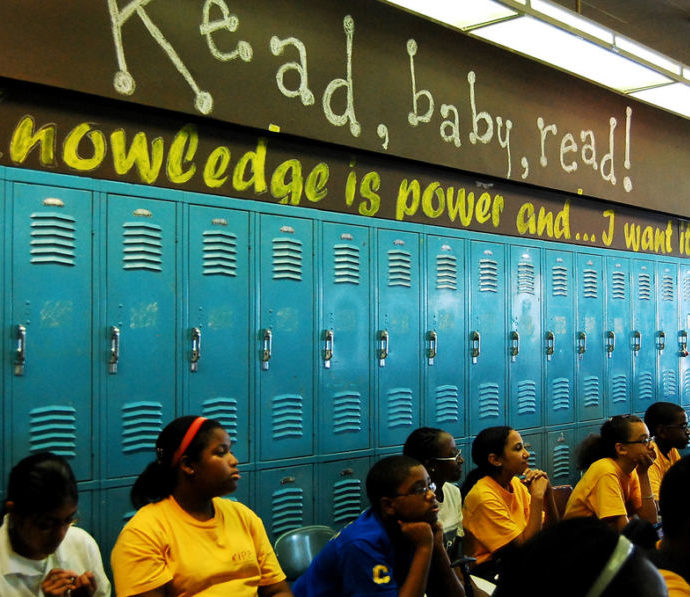Nearly 100 percent of KIPP’s students in New York City are black or Hispanic. Now it wants to open an integrated school.
ByAlex Zimmerman
To read the full article, visit Chalkbeat.org…
A part of Manhattan where a push is underway to integrate schools could get a new one designed to be diverse — if one of the city’s largest charter networks goes through with its plan.
KIPP hopes to open an “intentionally integrated” middle school two years from now in Manhattan’s District 3, which covers the Upper West Side and part of Harlem. The network currently operates 13 city charter schools in Brooklyn, the Bronx, and Manhattan.
The network’s superintendent, Jim Manly, outlined the idea in a letter to families on Monday that promised the new school would remain consistent with KIPP’s original mission.
“We believe KIPP can continue to be a national leader in the movement to educate black and Latino students AND we can be leaders in showing how socioeconomically and racially diverse schools can improve outcomes for all students,” Manly wrote.
KIPP is not the first charter organization in the city to open schools with the goal of achieving racial and socioeconomic integration. Brooklyn Prospect Charter School, for instance, is “diverse by design.” Success Academy, the city’s largest network, has opened campuses in Queens, Manhattan, and Brooklyn neighborhoods that draw significant numbers of white and Asian students in the last several years.
But if KIPP moves into the Upper West Side and attracts more of that area’s white and Asian families, it would be a departure for the network. Ninety-nine percent of KIPP’s New York City students are black, Hispanic, or multiracial, KIPP says, and most are from low-income families. Those students represent the population that KIPP, and most city charters, originally set out to serve.
The network’s plan is likely to face obstacles. The city is close to its limit on charter schools under state law, and the new crop of state legislators heading to Albany might not allow more. KIPP may also face opposition from the district’s elected parent council, though it does not have any say when it comes to charters.
“Our district stands by the statement it has been making for the past seven or eight years: We have enough schools in District 3,” said Kim Watkins, president of the local education council for the district, when asked about the proposal. “We don’t need any more charter schools.” (District 3 already includes at least a dozen charters, but nearly all are in the Harlem portion of the district.)
The council has supported a separate policy designed to integrate the district’s traditional public middle schools.
Joe Negron, who oversees middle schools for the charter network, said he has closely watched the District 3 council’s diversity efforts.
“We feel the goals of the [local education council] and goals of the community board are about diversifying their schools and we want to be part of that solution,” Negron said. “We want to do this with the district, not to the district.”
Manly’s letter lists four public events in the next week to gather feedback about the proposal, including one meeting at KIPP’s W. 125th Street campus.
More integrated schools have been shown to improve outcomes for students of color and low-income students. There could be potential benefits for the network, too. Affluent parents could donate muscle to KIPP’s political fights, and KIPP would face less competition from other networks for students and space in a neighborhood with fewer charters. Other networks have won federal grants for embracing a diverse-by-design approach in recent years as well.
KIPP officials said they hope the middle school reflects current student demographics in District 3. Currently, 32 percent of students in the district are Hispanic, another 32 percent are white, 22 percent are black, and 8 percent are Asian. Roughly half come from poor families, and 5 percent are English learners.
The network hopes to open the middle school in 2020 and says it would ultimately enroll 355 students.
To get there, KIPP will have to navigate a complicated political landscape. Last month’s election gave Democrats control of the state Senate, ousting Republicans who promoted charter-friendly policies. If the state legislature does not raise the limit on the number of charter schools in New York City, there are just seven slots remaining for new charters, according to state officials.
“We know we’re getting real close to the cap,” KIPP spokeswoman Vicki Zubovic said. “Clearly we know it’s going to be competitive, and we’re not sure what’s going to happen.”
